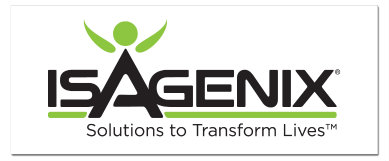Acupuncture not superior to sham acupuncture in knee osteoarthritis, study finds
ScienceDaily (Aug. 18, 2010) — Researchers from MD Anderson Cancer Center determined patients with osteoarthritis (OA) of the knee who are treated with traditional Chinese acupuncture (TCA) do not experience any more benefit than those receiving sham acupuncture (placebo). The team did find that the communication style of the acupuncturist could have a significant effect on pain reduction and satisfaction in patients.
Full findings are now online and will publish in the September print issue of Arthritis Care & Research, a journal of the American College of Rheumatology.
The National Institute of Arthritis and Musculoskeletal and Skin Diseases (NIAMS) cites OA as the most common type of arthritis — affecting 27 million Americans age 25 and older. With the aging population OA is expected to increase and NIAMS estimates that by 2030 roughly 72 million people in the U.S. will be older than 65 years and at high risk for OA. Individuals with OA experience pain, stiffness and swelling in one or more joints and some may notice a crunching sound as bones rub against one another. Many patients seek alternative treatments such as acupuncture to reduce OA symptoms.
According to the National Center for Complementary and Alternative Medicine NCCAM), acupuncture is a key part of traditional Chinese medicine where health is achieved by maintaining a “balanced state” in the body and disease is caused by an imbalance or blockage in the flow of Qi (vital energy) along pathways known as meridians. Acupuncture is used to stimulate specific points on the body in order to remove these blockages to restore and maintain health. A 2007 NCCAM survey (included with the National Health Interview Survey) estimated 3.1 million U.S. adults had used acupuncture in the prior year.
In the current study, Maria Suarez-Almazor, M.D., Ph.D., and colleagues compared the efficacy of TCA with sham acupuncture in OA of the knee. Additionally, researchers measured the effects of provider-patent interactions in the response to acupuncture. A total of 455 knee OA patients received either TCA or sham acupuncture treatments and 72 healthy controls were included. Acupuncturists were trained to interact in 1 of 2 communication styles — high (“I’ve had a lot of success with treating knee pain”) or neutral (“It may or may not work for you”) expectations. Patients were then randomized and nested within 1 of 3 style groups — waiting list, high, or neutral.
Researchers found no statistically significant differences between patients in the TCA and those in the sham acupuncture group. The TCA and sham groups had substantial reductions in the joint-specific multidimensional assessment of pain (J-MAP) at -1.1 and -1.0, respectively while the control group saw a reduction of -0.1. J-MAP measures the intensity, frequency, and quality of pain with response ranges from 1 to 7 where higher values indicate more pain.
“We found a small, but significant effect on pain and satisfaction with treatment, demonstrating a placebo effect related to the clinician’s communications style,” said Dr. Suarez-Almazor. The team found significant differences in J-MAP pain reduction (0.25) and satisfaction (0.22) for those patients in the high expectations group compared with the neutral group. “The improvement in pain and satisfaction suggests that the benefits of acupuncture may be partially mediated through placebo effects related to the behavior of the acupuncturist,” concluded Dr. Suarez-Almazor.
Editor’s Note: This article is not intended to provide medical advice, diagnosis or treatment.
Story Source:
The above story is reprinted (with editorial adaptations by ScienceDaily staff) from materials provided by Wiley – Blackwell, via AlphaGalileo.
Journal Reference:
Maria E. Suarez-Almazor, Carol Looney, YanFang Liu, Vanessa Cox, Kenneth Pietz, Donald M. Marcus, Richard L. Street. A Randomized controlled trial of acupuncture for osteoarthritis of the knee: Effects of patient-provider communication. Arthritis Care & Research, 2010; DOI: 10.1002/acr.20225Note: If no author is given, the source is cited instead.



